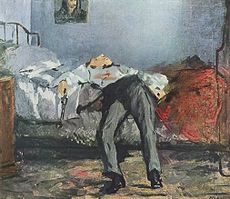 |
| (1616 Engraving by Simon de Passe) |
Archaeologist William Kelso claims to have found the remains of the oldest Protestant church in what is now the United States. Kelso told AFP that the large size of the church’s excavated post holes indicate the importance of its role within the original Jamestown colony.
And oh yes - it’s also allegedly the church in which Pocahontas married John Rolfe.
You may recall that Pocahontas was the beautiful daughter of Chief Powhatan, “the head of a network of tributary tribal nations in Tidewater Virginia.” Wikipedia also reports that it “may or may not be true” that Pocahontas saved the life of Englishman John Smith by risking her own.
What is true is that she herself was taken captive in 1613 due to Anglo-Native hostilities. While in English captivity, she converted to Christianity and afterwards married “tobacco entrepreneur” Rolfe. Newly-named “Rebecca” (a baptismal name which Wikipedia reports may have been a reference to the biblical mother whose sons, Jacob and Esau, represented “two nations”) and husband John Rolfe had a son named Thomas. The family moved to England, and Rebecca died from a still-unknown cause at age 22. Some ironically claim that it was from the “European disease” – smallpox – against which she had no immunity; others claimed that it might have instead been pneumonia, tuberculosis, or even poisoning.
Her husband was said to have been “a pious man” – “pious” having been partially defined as agony “over
the potential moral repercussions of marrying a heathen.” In a long letter to the governor requesting permission to marry Rebecca, Rolfe had claimed that he was “motivated not by the unbridled desire of carnal affection, but for the good of this plantation, for the honor of our country, for the Glory of God, for my own salvation…”
Two former first ladies of the United States might have been grateful that Rolfe had convinced himself of all this - they being Edith Wilson and Nancy Reagan (both descendants of Thomas Rolfe, the fruit of this “pious” union).
Resources
http://en.wikipedia.org/wiki/Pocahontas
http://www.huliq.com/12291/pocahantas-wedding-site-discovered-ruins-oldest-protestant-church-usa
http://www.jamestowne-wash-nova.org/JohnRolfe.htm
Coypright November 30, 2011 by Linda Van Slyke All Rights Reserved











